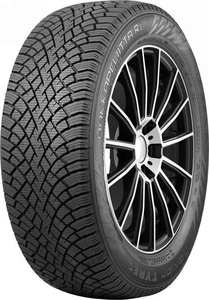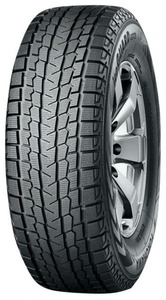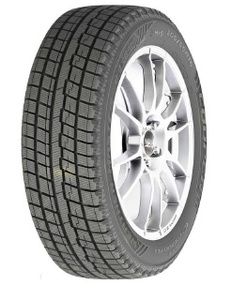The Tyre Reviews portal is already quite well-known in the industry for its tire tests, and this year its founder Jonathan Benson for the first time conducted a test of Scandinavian tires, picking seven models available both in Europe and North America. The tires were tested in size 205/55 R16; some of the leaders of the European and Scandinavian winter tire market segments — Continental WinterContact TS 870 and Nokian Hakkapeliitta 10 respectively — were used for comparison.
Ice
The ice handling test was won by the Continental VikingContact 7, Michelin X–Ice Snow, and Nokian Hakkapeliitta R5 (the new model of the 2022/2023 season). First-placed was Continental, but the TR experts noted that the Continental tire, unlike the other two leaders, went into a skid in a relatively abrupt way, while Michelin pleased the testers with a high traction on the front axle, and Nokian distinguished itself with a very predictable and well-balanced performance.

Next-placed were Pirelli, Cooper, and Yokohama, all of which ensured good traction, but still required some extra caution from the driver. On the whole, all the tires demonstrated very good results, the only exception being the inexpensive Federal Himalaya Iceo, which fell 10% behind the Continental model and was strongly prone to understeer, particularly during acceleration.
Ice Handling
- Conti VS7
- Michelin
- Nokian R5
- Pirelli
- Nokian 10
- Cooper
- Yokohama
- Federal
- Conti TS870
Info! Lap time, sec.
Subj. Ice Handling
- Michelin
- Conti VС7
- Nokian R5
- Nokian 10
- Pirelli
- Yokohama
- Cooper
- Federal
- Conti TS870
Info! Points.
As for the two tires of other categories, the European model from Continental, although coming last in terms of lap time, produced a very good impression thanks to a nice handling feel, while the studded Nokian tire demonstrated a very short braking distance, but was prone to understeer in mid-corner. Ultimately, the Nokian H10 came only fifth, and this testifies to the success that the developers of friction tires have achieved in the area of ice handling performance.
The ice acceleration and braking tests were performed on a smoother surface, and now the studded tires confidently came first in both disciplines. «Such results show how impressive studded tires can be in the most challenging of conditions» — the TR experts noted.
Ice Traction
- Nokian 10
- Nokian R5
- Conti VC7
- Michelin
- Yokohama
- Pirelli
- Cooper
- Conti TS870
- Federal
Info! Acceleration time from 5 to 20 km/h, sec.
Ice Braking
- Nokian 10
- Michelin
- Nokian R5
- Conti VC7
- Pirelli
- Yokohama
- Cooper
- Federal
- Conti TS870
Info! Ice braking from 20 to 5 km/h, m.
Snow
On Snow, the Continental model went into a skid relatively abruptly, while the most stable behavior was demonstrated by the Pirelli tire. But then again, the Nokian and Michelin models also scored high points for handling response, and the TR experts noted that, when driving on a VW Golf 8, it was really hard to tell the difference between the two. In terms of lap time, the results demonstrated by the top four tires differed by no more than 1%, and all the contestants received high scores again. Federal, Cooper, and Yokohama were again a little behind because they were a bit slow in acceleration and in corners, while, in addition, the Cooper and Federal models were clearly prone to understeer.

The European-type tires again ended up at the bottom of the tournament bracket, but the gap was pretty small, while the studded Nokian model scored silver, i.e. technically, the tires of this Finnish brand scored the two top places in this discipline.
Snow Handling
- Nokian 10
- Nokian R5
- Pirelli
- Conti VC7
- Michelin
- Federal
- Cooper
- Yokohama
- Conti TS870
Info! Snow handling time, sec.
Snow Circle
- Nokian 10
- Nokian R5
- Michelin
- Pirelli
- Conti TS870
- Continental VC7
- Federal
- Cooper
- Yokohama
Info! Snow circle time, sec.
The best snow traction was demonstrated by the new Nokian HR5, while the «Europeans» managed to surpass three Nordic tires.
In the snow braking test, the best performance was demonstrated by the Yokohama tire; next-placed — with almost identical results — were two Nokian models, which also won the lateral grip test.
Although the Scandinavian-type winter tires are developed with a bias on ice and snow grip, they must also be effective on wet pavement, and the best handling performance on the wet track was demonstrated by the Continental, Michelin, and Pirelli. According to Benson, all the three tires were very reliable; the Michelin model demonstrated the more sensitive handling response, and the Continental had the best traction on test, yet exhibited minor issues with hydroplaning resistance. Fourth-placed was Nokian that also had the same problem, which extended the lap time, and the fifth place was scored by the Federal model, whose steering response was somewhat fuzzy. As for Yokohama, it was the only tire on test that could not ensure stable grip on the rear wheels, while the Cooper model had a less-than-perfect handling response due to limited traction in every situation.
Snow Traction
- Nokian R
- Conti VC7
- Pirelli
- Nokian 10
- Michelin
- Conti TS870
- Cooper
- Yokohama
- Federal
Info! Acceleration time, sec.
Snow Braking
- Yokohama
- Nokian 10
- Nokian R5
- Conti VC7
- Federal
- Michelin
- Cooper
- Pirelli
- Conti TS870
Info! Snow braking from 40 to 5 km/h, m.
The European-type Continental was so much more effective than the «Scandinavians» in this discipline that TR compared its outstanding performance with the difference between road tires and slicks. The studded tires were not tested on tarmac because the proving ground was not designed for this category, and they would have damaged the road surface.
Wet
In the next discipline — wet braking — the victory was unexpectedly scored by the Federal tire, followed by Continental, Nokian, and Michelin.

The best in hydroplaning resistance — both straight and lateral — was the Michelin tire, the poorest results being shown by Nokian and Continental.
Wet Braking
- Conti TS870
- Federal
- Conti VC7
- Nokian R5
- Michelin
- Pirelli
- Cooper
- Yokohama
Info! Wet braking from 80 to 5 km/h, m.
Straight Hydroplaning
- Conti TS870
- Michelin
- Federal
- Cooper
- Yokohama
- Pirelli
- Conti VC7
- Nokian R5
Info! Float speed, km/h.
Dry
On dry pavement, the Continental tire came first in both handling and braking tests, while the Pirelli model also scored high points thanks to a high level of traction. In the handling test, just as in the wet tests, tires that ended up at the bottom of the tournament bracket were Cooper, Yokohama, and Federal, the latter demonstrating pretty bad handling performance, yet being pretty quick to stop the car.

On dry pavement, the European-type tires again proved to be the most effective, but this time around the gap was not so significant, particularly when it came to braking distances.
Dry Handling
- Conti TS870
- Conti VC7
- Pirelli
- Nokian R5
- Michelin
- Cooper
- Yokohama
- Federal
Info! Dry handling time, sec.
Dry Braking
- Conti TS870
- Conti VC7
- Pirelli
- Federal
- Nokian R5
- Michelin
- Cooper
- Yokohama
Info! Dry braking from 100 to 5 km/h, m.
Noise / Comfort
The noise was measured inside the car, and the quietest tires were Nokian and Continental, followed by the European-type tires and the Michelin model. Tires that scored maximum points for ride smoothness were Nokian and the much-noisier Federal and Yokohama models, which means that if you need tires ensuring a better ride comfort (and if your budget allows you to), you might want to consider purchasing the new Hakkapeliitta model.
Noise
- Conti VC7
- Nokian R5
- Conti TS870
- Michelin
- Pirelli
- Federal
- Cooper
- Yokohama
Info! Internal noise, db.
Comfort
- Federal
- Nokian R5
- Yokohama
- Conti TS870
- Conti VC7
- Michelin
- Pirelli
- Cooper
Info! Subjective comfort, points.
Environment
In the hydroplaning resistance test, the difference between first and fourth places constituted only 4%, which in real life will spell just a 1% difference in fuel consumption. The other tires fell behind the leader by 15% on average, and Federal by 32%, and this difference will become tangible in real life.
Rolling Resistance
- Micehlin
- Nokian R5
- Yokohama
- Conti VC7
- Conti TS870
- Nokian 10
- Pirelli
- Cooper
- Federal
Info! Rolling resistance, kg/t.
Verdict
The first place in the final standings was scored by three tires at once — the Continental VikingContact 7, Michelin X–Ice Snow, and Nokian Hakkapeliitta R5 (their combined scores differed by no more than 0.1%, and it was decided to omit these differences in the final ranking).

According to the TR experts, the Continental tire was the best on dry pavement and also had a slight edge over the competition on wet pavement, but had a relatively weak hydroplaning resistance. In addition, the tire was very good on snow and ice, turned out to be the quietest on test, and earned high scores for ride smoothness. At the same time, the Continental tire had the strongest rolling resistance among the leaders.
The Michelin X–Ice Snow was inferior to the Continental model on dry pavement, but on the wet track it was about as effective, and, in addition, it demonstrated the best hydroplaning resistance on test. On snow, the Michelin’s score was a few percent worse than that of Continental; on ice, it was about the same. Besides, the X–Ice Snow is very quiet and comfortable, and it demonstrated the lowest rolling resistance among the tested tires.
Nokian Hakkapeliitta R5 showed good results on dry and wet surfaces, but at the same time it had a very poor hydroplaning resistance. At the same time, the Nokian model was recognized to be the best on snow; it also had the highest traction on ice and excellent scores in the other disciplines. In addition, the Nokian tire turned out to be the quietest on test, and the second-best fuel saver.
Fourth place was scored by the Pirelli Ice Zero FR. The TR experts noted that this tire was a joy to drive, its only problem being a long braking distance on snow. At the same time, when placed in the same conditions, the Pirelli tire ensures very good traction and handling response, and it raised no complaints either on dry or wet pavement, i.e. Pirelli was able to design a tire with a really well-balanced performance.
Next-placed was the Yokohama iceGUARD iG53, whose fifteen minutes of fame came in the snow braking test, where it confidently came first. In the other disciplines, its results were not as impressive: the Yokohama tire had the longest braking distance on wet and dry pavement alike, found itself in the middle of the snow performance ranking, and, to cap it all, was pronounced to be the noisiest tire on test.
The sixth line was occupied by the Cooper Weathermaster S1000, which demonstrated an acceptable snow performance, but indulged in obvious weaknesses on snow, where it had a very poor traction, and handling and braking response below average. On wet pavement, the Cooper model cannot either quickly bring the car to a standstill or ensure a good handling response, but it does have a strong hydroplaning resistance. And, finally, on dry pavement, the Cooper tire again lost points due to a long braking distance, and it had a very strong rolling resistance.
The bottom line of the tournament bracket was scored by the Federal Himalaya Iceo tire, which, it must be noted, was rather effective on tarmac (even though it did have issues with dry handling). Its ice performance was all but average, and its ice grip was too weak for the tires of this type (the traction was almost 40% lower than that of the other tires), and the Federal model also turned out to be a poor fuel saver.
1st place: Continental / VikingContact 7
![]() Quick Take
Quick Take
Continental VikingContact 7

The tire works perfectly in all weather conditions and combines high grip with low noise and low rolling resistance, its only issue being average resistance to hydroplaning.
1st place: Michelin / X-Ice Snow
![]() Quick Take
Quick Take
Michelin X-Ice Snow

This Michelin model has a very strong hydroplaning resistance and ensures excellent handling response on wet pavement. In addition, this tire quickly stops the car on ice, demonstrates a good snow performance, is pretty quiet, delivers a smooth ride, and has a very low rolling resistance. The only issue with it is average dry braking performance.
1st place: Nokian / Hakkapeliitta R5
![]() Quick Take
Quick Take
Nokian Hakkapeliitta R5

Nokian Hakkapeliitta R5 is perfect to drive on ice and snow, it has very good dry and wet braking performance, smooth ride, and low rolling resistance. At the same time, there are critical issues with hydroplaning resistance.
4th place: Pirelli / Ice Zero FR
![]() Quick Take
Quick Take
Pirelli Ice Zero FR

The Pirelli Ice Zero FR tire has an excellently balanced performance and ensures great handling response in any weather conditions. At the same time, it was not without issues, such as a relatively long dry braking distance, average hydroplaning resistance, and increased rolling resistance.
5th place: Yokohama / iceGUARD iG53
![]() Quick Take
Quick Take
Yokohama iceGUARD iG53

The Yokohama iceGUARD iG53 tire has a good snow braking performance and a sufficiently high traction on ice, as well as effectively combats hydroplaning and has low rolling resistance. At the same time, on wet pavement, the Yokohama tire has a long braking distance and poor handling performance, while on dry pavement it is also inferior to some of the competitors in terms of braking capabilities. The tire is also pretty noisy.
6th place: Cooper / Weather-Master Ice 100
![]() Quick Take
Quick Take
Cooper Weather-Master Ice 100

On snow, the Cooper WeatherMaster Ice 100 tackles all the challenges in a quite acceptable way, but on ice the grip suddenly goes, which must be borne in mind. The tire also takes forever to stop the car on tarmac — both wet and dry — and is characterized by increased noise and high rolling resistance. To do it justice, one must add that the Cooper tire has a strong hydroplaning resistance.
7th place: Federal / Himalaya ICEO
![]() Quick Take
Quick Take
Federal Himalaya ICEO

The list of achievements of the budget Federal Himalaya Iceo tire includes a short braking distance on snow and wet pavement, and very good hydroplaning resistance, but for a Scandinavian tire it has a very poor ice performance. In addition, the tire makes a rather loud noise and is characterized by a very high rolling resistance.
Out of competition: Continental / WinterContact TS 870
![]() Quick Take
Quick Take
Continental WinterContact TS 870

Just as a European tire should, the Continental WinterContact TS 870 surpasses the «Scandinavians» on tarmac, but is inferior to them on ice and snow. Other characteristics include low noise emission, but a relatively high rolling resistance.
Out of competition: Nokian / Hakkapeliitta 10
![]() Quick Take
Quick Take
Nokian Hakkapeliitta 10

The studded Nokian Hakkapeliitta 10 is excellent on ice and has a rather strong hydroplaning resistance. In addition, this tire is pretty quiet but has an increased rolling resistance.









